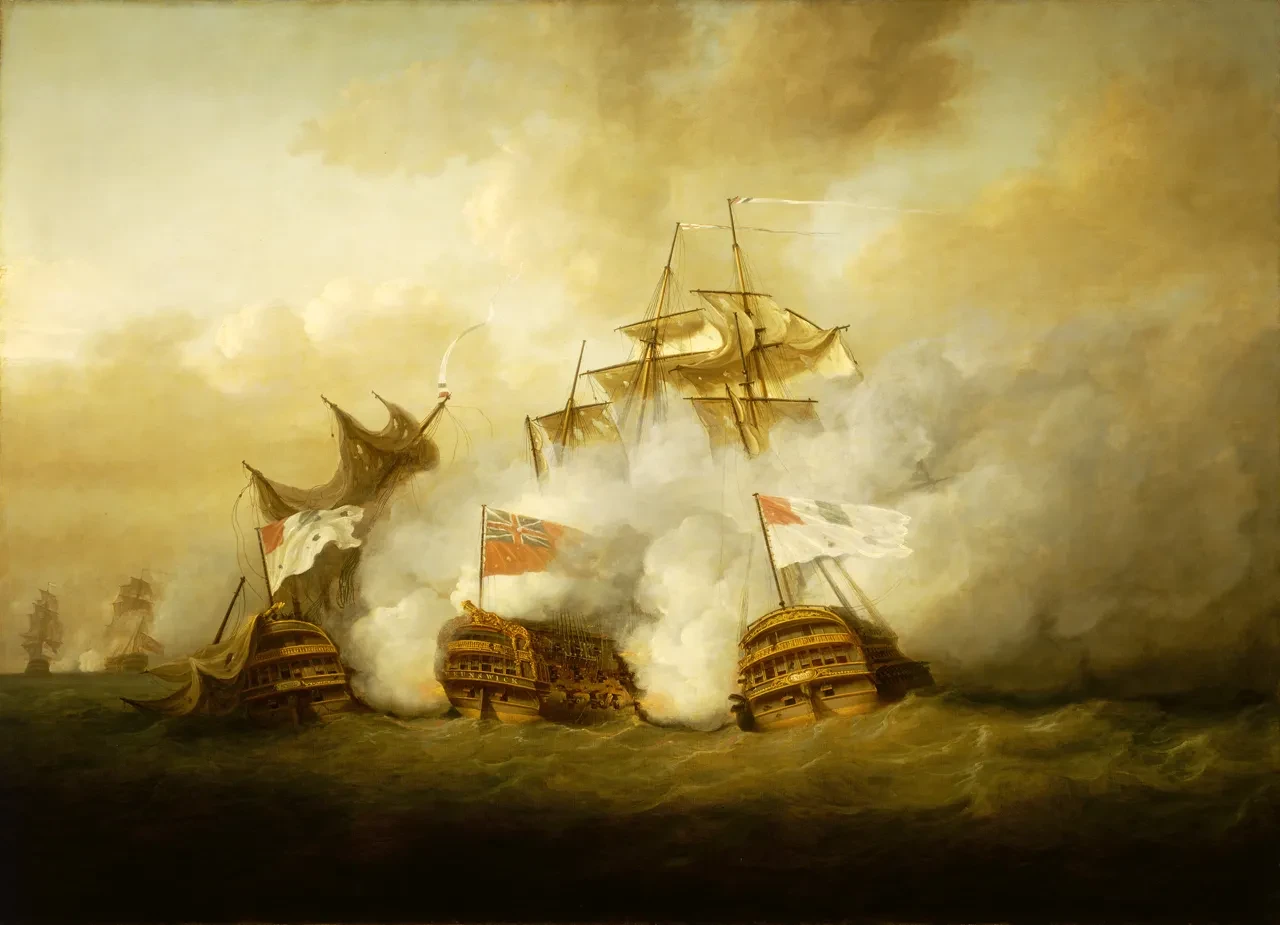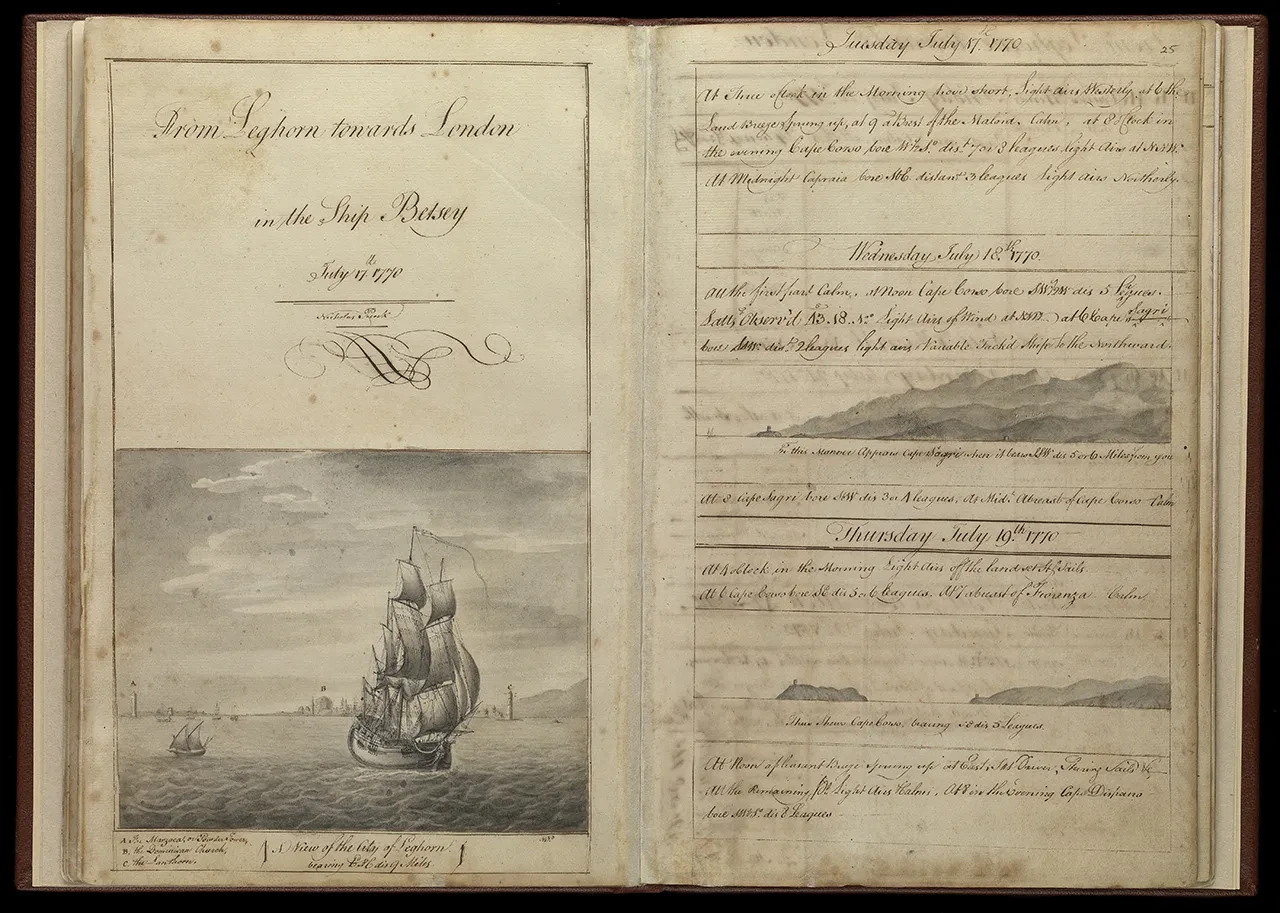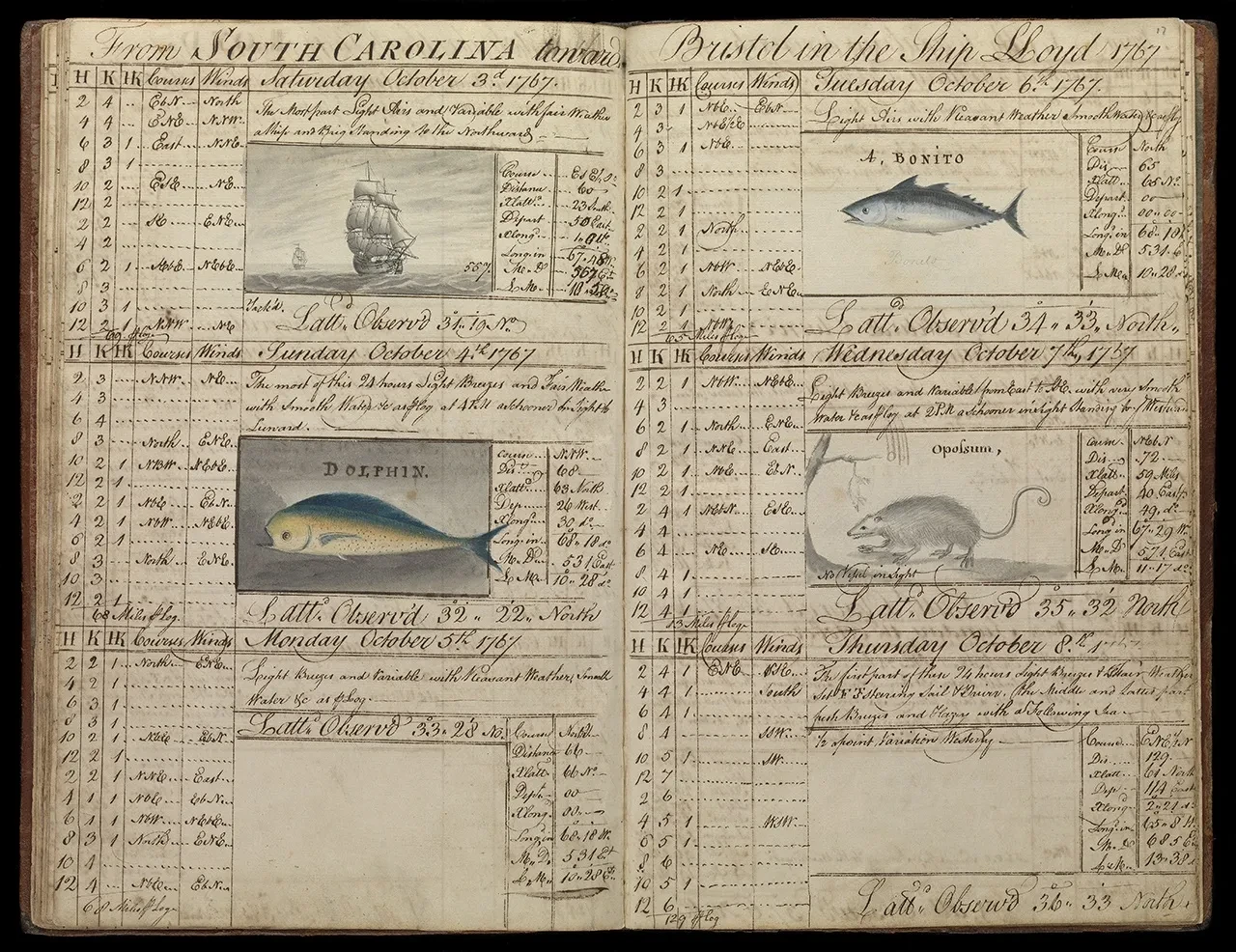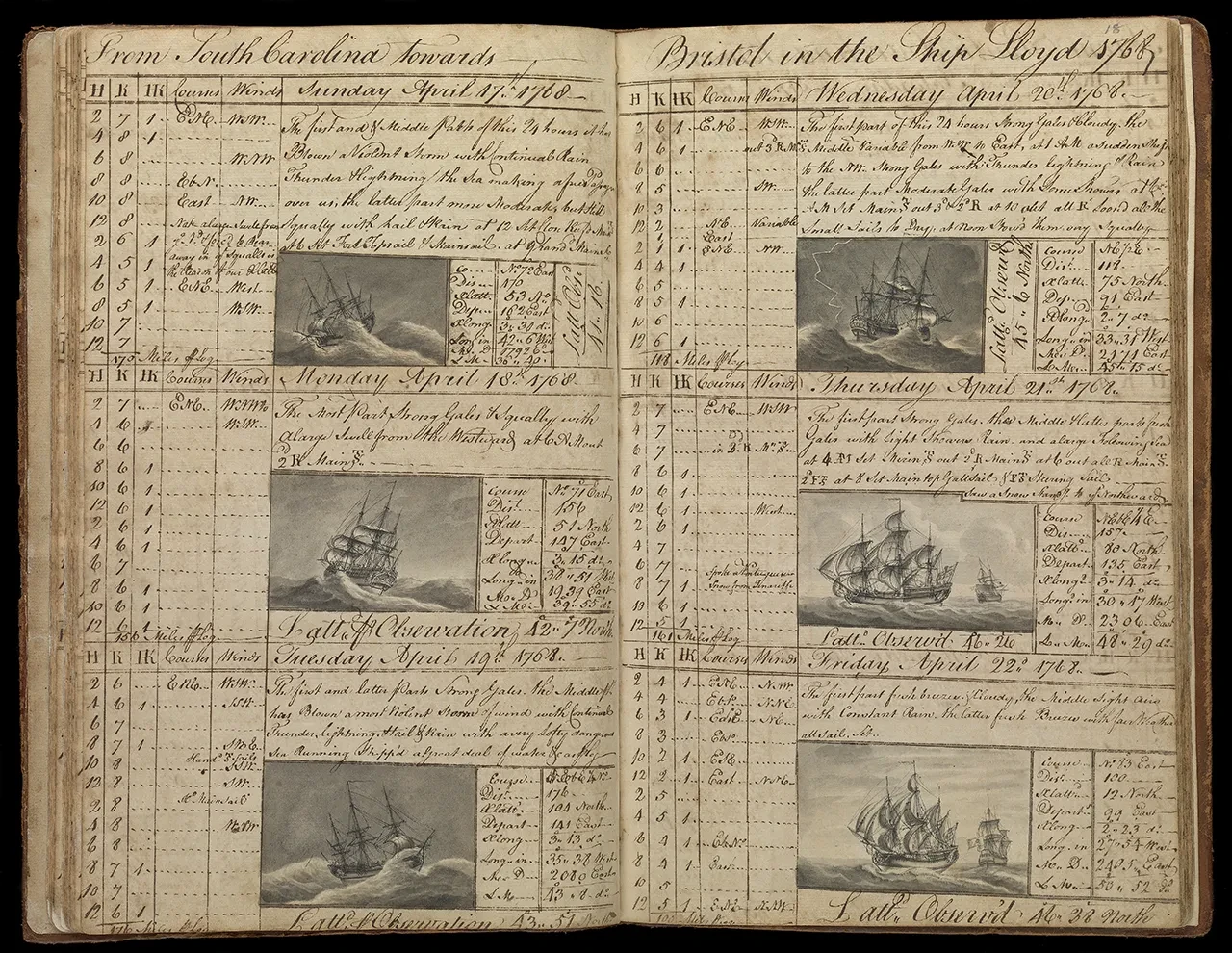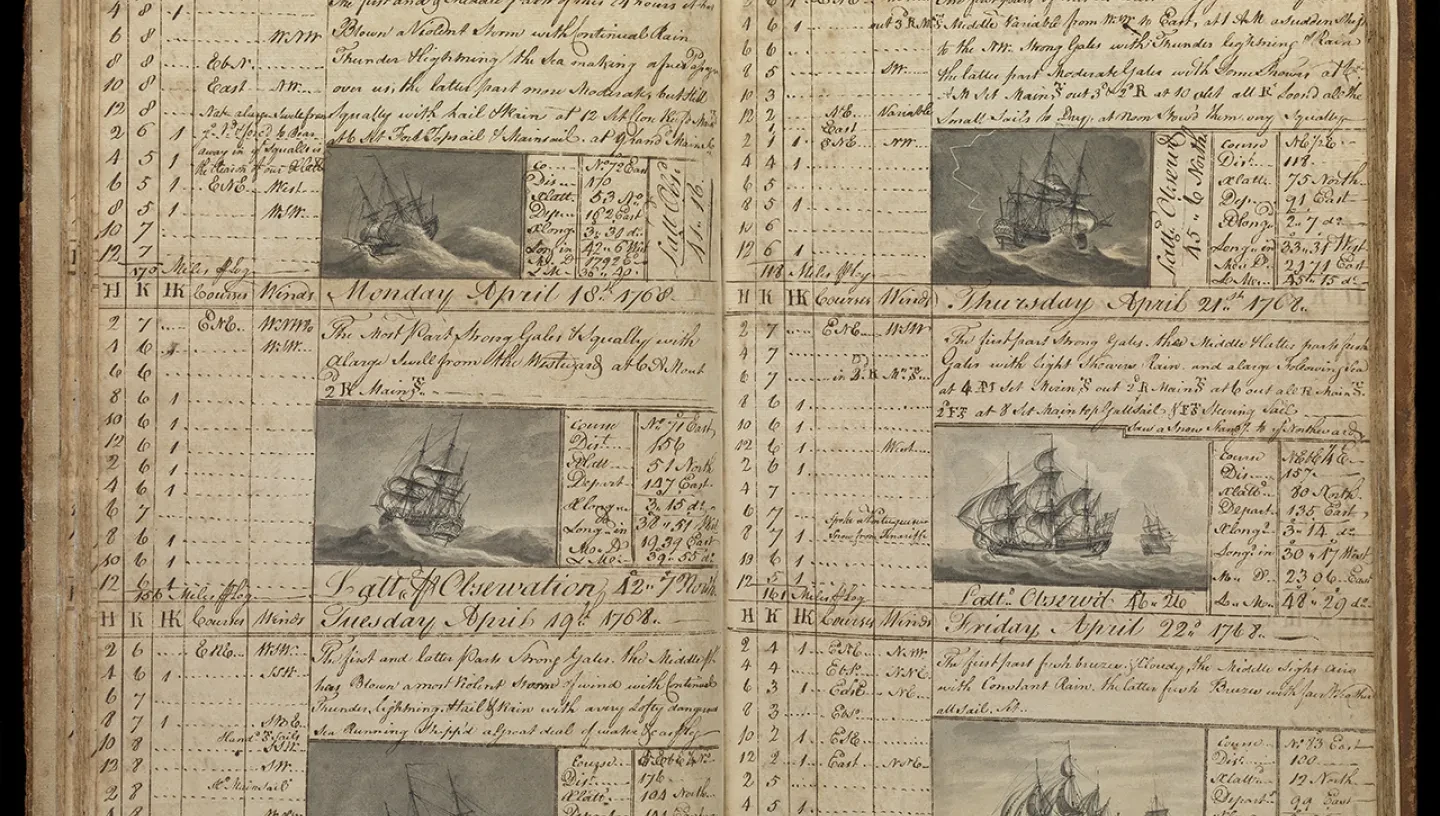
The Caird Library and Archive has several primary and secondary materials relating to marine artists. One of the highlights of our collection is the illustrated logbooks of Nicholas Pocock (1740-1821).
Pocock was an eighteenth-century marine artist, particularly notable for his depictions of British naval engagements during the French Revolutionary Wars. He reached considerable popularity through prints of his work, and was a frequent exhibitor at the Royal Academy of Arts.
In 1794 he became the first artist in over a century to witness a major British naval battle when he observed the action on board HMS Pegasus at the battle of the Glorious First of June. The Library have his sketches from that famous engagement (JOD/12).
For art historians, perhaps the most intriguing aspect about Pocock was that he taught himself to draw and paint. He was not apprenticed to an artist or trained at the Royal Academy (which had just begun to admit students), as one might expect. Instead, he learnt his trade plying the transatlantic sea routes whilst working as a merchant captain.
The beginnings of a marine artist
At the age of seventeen Pocock was apprenticed to his father, a mariner. Following the death of his father in 1759 he was employed by the Champions, a well-connected Bristol family of merchants.
By 1766 Pocock had been entrusted with the captaincy of the Lloyd by Richard Champion. A member of the Society of Merchant Venturers of Bristol, Champion had extensive mercantile and political interests on both sides of the Atlantic.
Over the next three years Pocock was charged with undertaking six trading voyages between Bristol and Charleston, South Carolina. They were involved in exporting British manufactures to North America in exchange for raw commodities. While not directly involved in the slave trade, Champion did have dealings with prominent Bristol slavers such as Thomas Farr.
On these voyages Pocock, as captain, would be required to record daily notes in his log for Champion. His logs contain the usual detail on the ships progress across the Atlantic, recording the vessel’s condition, speed, heading as well as the weather and wind direction.
In a more unusual addition, Pocock left a prominent space for an illustration in each entry documenting the voyage. These drawings would often feature observations of the ship, though subjects such as profiles of coastline and local wildlife also drew the artist’s attention. Champion must have enjoyed reviewing Pocock’s logs, bringing some colour and liveliness to what is normally a rather routine document.
Pocock's logbooks at the National Maritime Museum, Greenwich
Seven of Pocock’s logs are known to exist and the National Maritime Museum is fortunate to hold four of them. The Library also has copies to view on microfilm (SMF83). The remainder can be found at the Bristol Record Office and the Mariners’ Museum in Newport News, Virginia.
Of the four logbooks at the National Maritime Museum, three were made during voyages between England and South Carolina on board the Lloyd over a three-year period. These include LOG/M/72, dated 21 June - 4 November 1767; LOG/M/28, 4 January - 5 October 1768; LOG/M/54, 24 October 1768 - 29 February 1769 and 23 May - 6 October 1769.
The fourth, LOG/M/3, documents a Mediterranean voyage on Betsey from Bristol to Cork, Cadiz, Gibraltar, Minorca, Leghorn and London, between 28 February and 8 October 1770.
From merchant captain to marine artist
The Mediterranean venture was a departure from Pocock’s usual Atlantic route, as Champion sought to expand his enterprise in the face of rising tensions in the North American colonies.
In addition to their business relationship, Pocock and Champion developed a strong friendship. Indeed, Champion and his family appear to have acted as an encouraging influence on Pocock’s emerging artistic talent.
As a Whig, Champion was influential in the 1774 election of Edmund Burke to the House of Commons as Member for Bristol. He would later serve as the primary source of information for Burke regarding the unfolding political crisis in the Thirteen Colonies.
These events may have brought Champion some measure of influence beyond Bristol. His extensive contacts would have been of use to his friend, as Pocock made the transition from merchant captain to marine artist around 1776-78.
In 1780, following a late submission for an exhibition at the Royal Academy, Pocock was further encouraged by Sir Joshua Reynolds. Impressed with his ‘first essay in oil colours’, Reynolds wrote to Pocock to urge him to develop a better sense of harmony in his pictures between the land, sea and sky.
Pocock remained in Bristol until 1789 when he moved to London as demand for his work increased. During his second career, he enjoyed the patronage of Admiral Lord Hood, his brother Lord Bridport, and First Lord of the Admiralty Lord Barham amongst others. He was also commissioned by the Navy Board for several projects. In 1804 he became a founder member of the Society of Painters in Watercolours.
Several of Pocock’s paintings are now held in the Museum’s collection, along with prints and other sketches. His logbooks, however, provide an invaluable insight into Pocock’s work at a formative time in his development as a professional marine artist.
Further reading:
Archibald, EHH. Dictionary of Sea Painters. Woodbridge: Antique Collectors' Club, 1989.
Cordingly, David. Nicholas Pocock (1740-1821). Oxford Dictionary of National Biography.
Cordingly, David. Nicholas Pocock, 1740-1821. London: Conway Maritime, 1986.
Hughes, Eleanor. “Nicholas Pocock: Accuracy and Agency” in Spreading canvas: eighteenth-century British marine painting, edited by Eleanor Hughes. New Haven & London: Yale Centre for British Art, Yale University Press, 2016.
The weather vocabulary of an eighteenth-century mariner: the log-books of Nicholas Pocock, 1740-1821. Reading: Royal Meteorological Society, 1995.
Marine artists of Bristol: Nicholas Pocock 1740-1821, Joseph Walter 1783-1856. Bristol: City of Bristol Museum and Art Gallery, 1982.
Nicholas Pocock 1741-1821: a selection of his marine works from the collections of the National Maritime Museum. Greenwich: National Maritime Museum, 1975.

